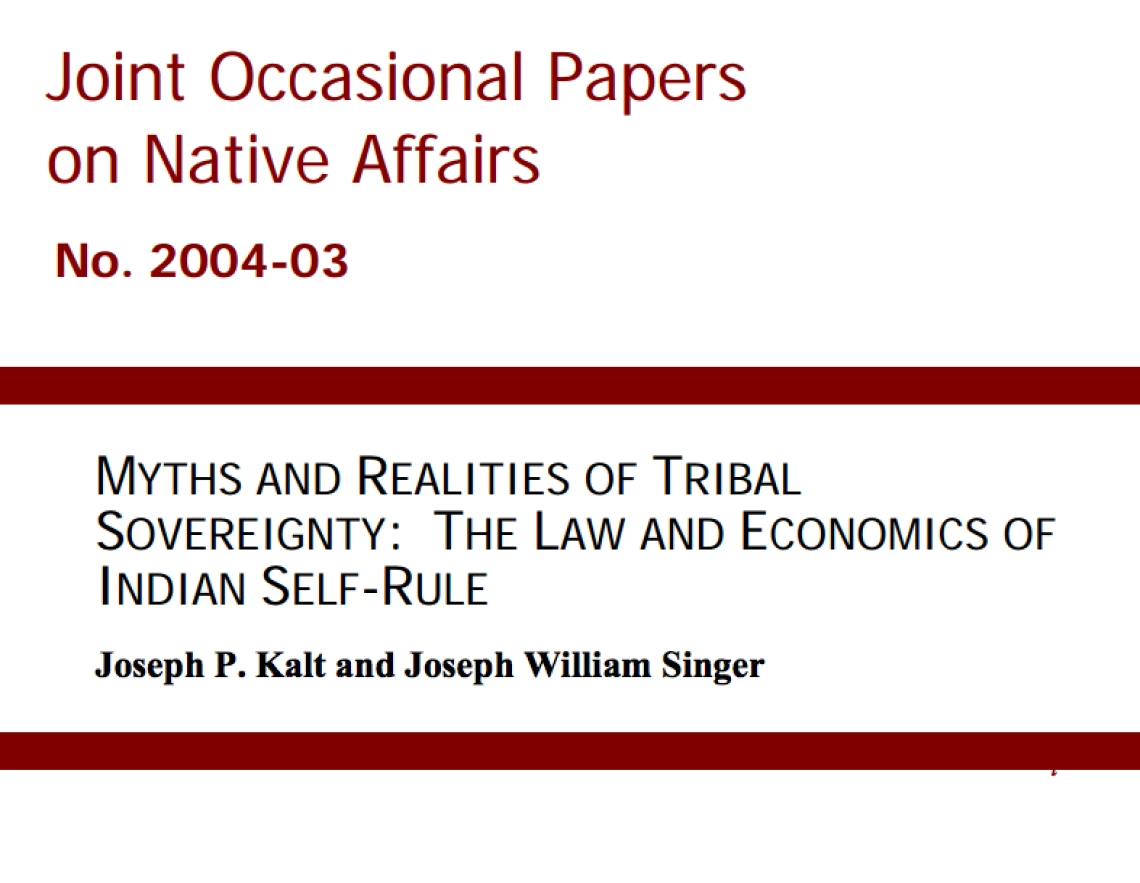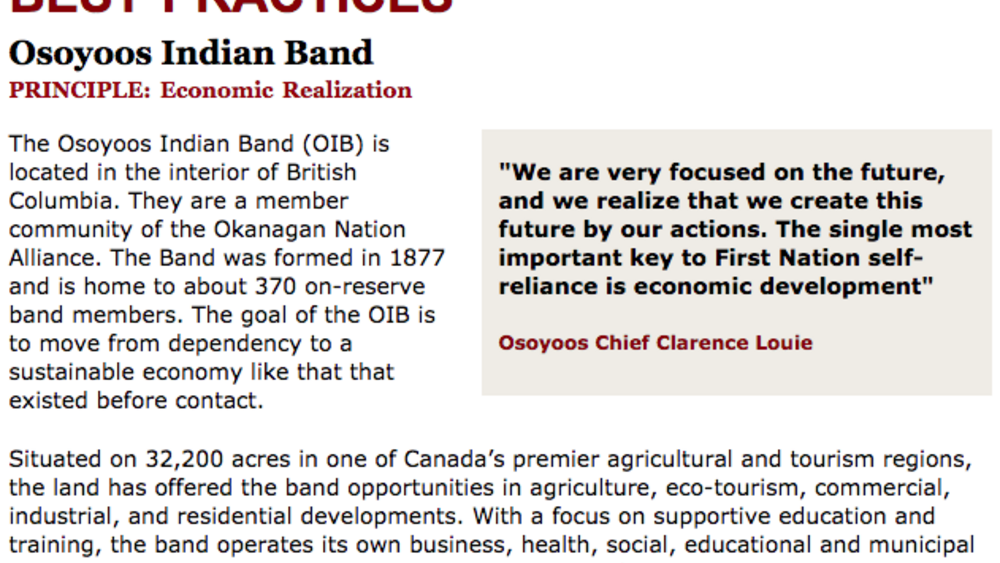The last three decades have witnessed a remarkable resurgence of the American Indian nations in the United States. The foundation of this resurgence has been the exercise of self-government (sovereignty) by the more than 560 federally- recognized tribes in the U.S. In this study, we explore legal and economic dimensions of current perceptions of and debates over the nature and extent of tribal self-rule in the United States. Our objective is to clarify and illuminate by distinguishing between myth and reality. We address key threads of thought and assumption that pervade, accurately or inaccurately, discussions in the public policy arena. What emerges is a picture in which tribes do exercise substantial, albeit limited, sovereignty. This sovereignty is not a set of special rights. Rather, its roots lie in the fact that Indian nations pre-exist the United States and their sovereignty has been diminished, but not terminated. Tribal sovereignty is recognized and protected by the U.S. Constitution, legal precedent, and treaties, as well as applicable principles of human rights.
Additional Information
Kalt, Joseph P., Joseph William Singer. "Myths and Realities of Tribal Sovereignty: The Law and Economics of Indian Self-Rule". Joint Occasional Papers on Native Affairs No. 2004-03, The Harvard Project on American Indian Economic Development, Native Nations Institute for Leadership, Management, and Policy, The University of Arizona. Tucson, Arizona. 2004. JOPNA.




